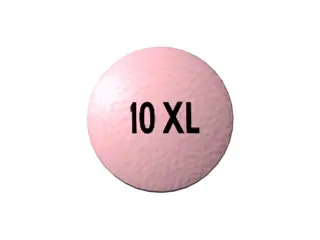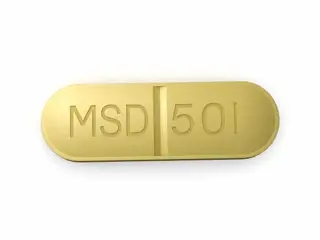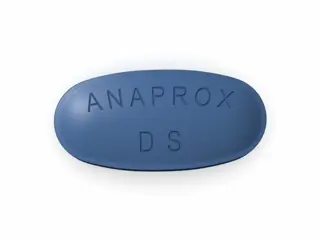Pain Relief



Discover effective pain relief solutions including fast-acting creams, tablets, and patches designed to reduce discomfort and improve your daily comfort. Shop trusted brands for muscle, joint, and headache pain to find the perfect remedy for your needs.
Pain Relief is a critical category for many seeking effective treatment options. Within this category, several medications have gained wide recognition for their ability to manage various types of pain, from acute discomfort to chronic conditions.
Ibuprofen is among the most popular over-the-counter pain relievers. It belongs to the nonsteroidal anti-inflammatory drugs (NSAIDs) group. Ibuprofen is effective for reducing inflammation, fever, and mild to moderate pain. It is commonly used for headaches, muscle aches, arthritis, and dental pain. Its fast action and relatively low side-effect profile make it a favorite for short-term use.
Motrin is another brand-name version of ibuprofen. It shares the same benefits and is preferred by many for its availability and trusted performance. Both ibuprofen and Motrin should be taken with food to reduce the risk of stomach irritation.
Naprosyn and Naprelan contain naproxen, another NSAID, known for longer-lasting pain relief compared to ibuprofen. Naproxen is ideal for chronic conditions like arthritis and ongoing muscle pain. Naprelan offers an extended-release form, allowing for less frequent dosing, which helps maintain steady pain control over time.
Celebrex (celecoxib) is a selective COX-2 inhibitor. It targets inflammation with a lower risk of gastrointestinal side effects than traditional NSAIDs. Celebrex is often prescribed for arthritis and other inflammatory conditions. Many users report significant pain relief with good tolerance over long-term use.
VoltarenVoltarol (diclofenac) deliver strong anti-inflammatory and analgesic effects. These medications are available in oral and topical forms. Topical Voltaren gel is widely appreciated for localized relief of joint and muscle pain, providing effective results without the systemic side effects of oral NSAIDs.
Anaprox also contains naproxen and is known for its quick onset and extended pain control. It's frequently used for post-operative pain and menstrual cramps, providing consistent relief for moderate to severe pain episodes.
Maxalt and Zomig are specifically designed for migraine pain. They belong to the triptan class, working by narrowing blood vessels in the brain to stop migraine progression. These medications are very effective but generally reserved for prescription use due to their specific action and potential side effects.
Pain relieved by muscle relaxants like Lioresal and Zanaflex targets muscle spasms. These drugs reduce tone and ease painful muscle contractions. Both are useful after injuries or for chronic spasticity conditions, though they can cause drowsiness and require careful dosing.
Neurontin (gabapentin) is often prescribed for nerve pain. It helps with conditions like shingles, diabetic neuropathy, and fibromyalgia. While not a traditional painkiller, Neurontin modulates nerve activity to reduce chronic nerve pain, improving quality of life for many patients.
Decadron (dexamethasone) is a corticosteroid that reduces inflammation and associated pain. It is used in severe cases of inflammation and certain autoimmune conditions. Due to its powerful action, Decadron is usually prescribed for short-term use to avoid side effects.
Panadol (paracetamol/acetaminophen) is a widely used analgesic and fever reducer. It is gentle on the stomach and suitable for mild to moderate pain. Panadol lacks anti-inflammatory properties but is a safe alternative when NSAIDs are contraindicated.
Pyridium is unique as it targets pain related to urinary tract discomfort. It acts as a local analgesic to the urinary tract lining, providing fast relief from burning and irritation during urination.
Imdur is primarily a heart medication but can indirectly relieve chest pain caused by angina. It helps widen blood vessels, improving blood flow and reducing cardiac pain episodes.
Benemid (probenecid) is less commonly associated directly with pain relief but is used to manage gout. By reducing uric acid levels, it helps prevent painful gout attacks.
Imuran is an immunosuppressant used in autoimmune conditions where pain results from inflammation. It helps control disease activity and symptoms but requires careful monitoring.
Indocin (indomethacin) is a potent NSAID widely used for moderate to severe arthritis pain. It has a higher risk of gastrointestinal side effects but is effective at reducing inflammation and painful swelling.
Overall, these medications present a range of options for managing pain. From over-the-counter NSAIDs like ibuprofen and naproxen to prescription treatments such as triptans for migraines or muscle relaxants, the right choice depends on the pain type and patient-specific factors.
Many users appreciate the effectiveness of NSAIDs for joint and muscle pain due to their combined pain-relieving and anti-inflammatory actions. Muscle relaxants help where spasms are involved, and nerve pain benefits from tailored options like Neurontin. For migraine sufferers, triptans such as Maxalt and Zomig offer targeted relief that improves function dramatically.
When choosing pain relief, consideration of side effects is important. NSAIDs can cause stomach upset and, in some cases, increase cardiovascular risks. Paracetamol is safer for those sensitive to NSAIDs but is not anti-inflammatory. Muscle relaxants and immunosuppressants require medical supervision due to sedation and immune effects, respectively.
In conclusion, the pain relief category offers a diverse set of medications. Each addresses specific pain causes with varying mechanisms. Selecting the right medication depends on pain type, severity, patient history, and desired speed of relief. Consultation with a healthcare provider ensures safe and effective pain management.

























